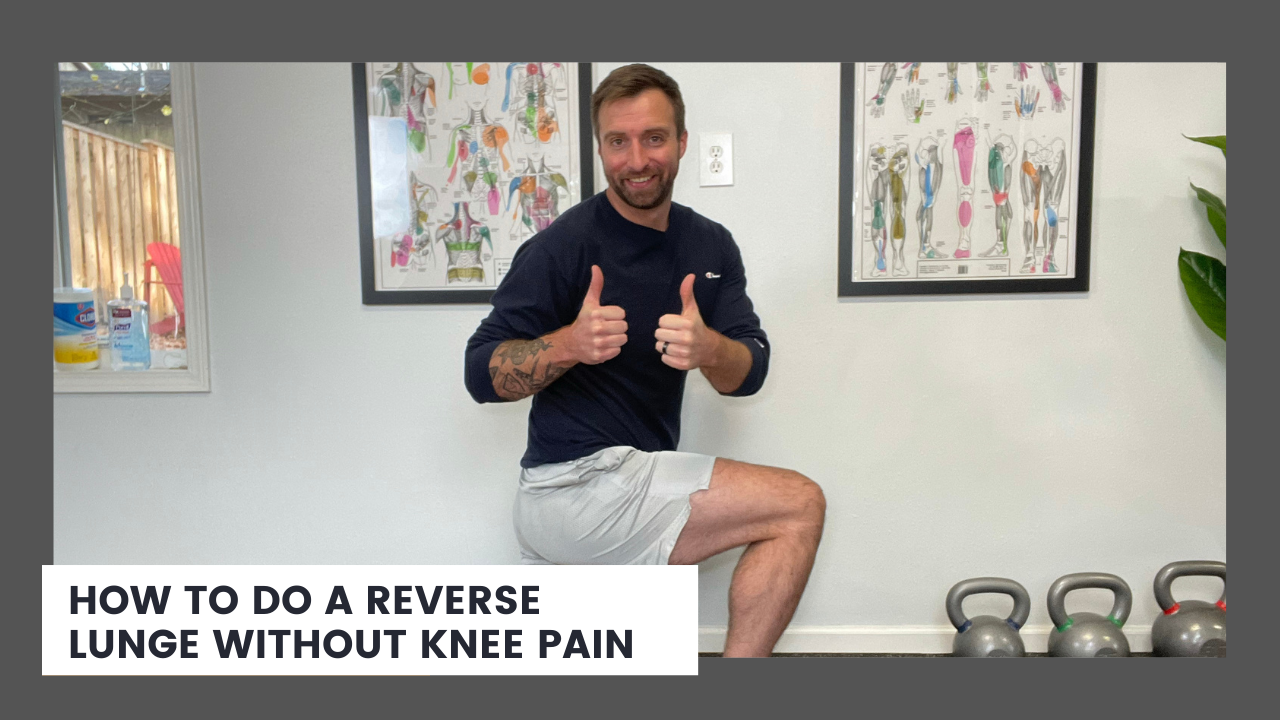How To Do a Reverse Lunge Without Knee Pain
The reverse lunge is one of the best exercises to build lower body strength as well as improve balance and endurance. It's a functional exercise meaning it's also a movement we use frequently in the real world (not just in the gym). From stairs, to walking, to hiking practicing our lunge will improve your ability to keep active, strong, and doing what you love. In this article we'll teach you how to do a reverse lunge safely and effectively to help you build strength without stressing your joints.
How To Do A Reverse Lunge
Ready to practice your reverse lunge? Master the move by following the steps below from Dr. Carl Baird. Then keep reading to learn how to fix common mistakes and learn new variations. To perform the reverse lunge:
Stand tall with feet hips width apart. Brace your core.
Take a step back placing toe on ground behind you
Drop back knee to ground (use matt or pad if this is uncomfortable.
Press off of front leg (don't toe off back leg) to return to starting position
Repeat on other side.
Common Mistakes And How To Fix Them
Stepping Back Too Far (Or Not Stepping Back Far Enough)
Stepping back too far shifts your center of gravity backward and makes it hard to press off your front foot. Not stepping back far enough changes the angle of the front and back knee and can lead to pain by irritating the structures of the knee. Find the middle where your front shin remains perpendicular to ground.
'Toeing Off' With Your Back Leg
The purpose of the reverse lunge is to build strength of your front foot. If you have an injury, pain, or weakness in your knee your body will try to 'cheat' by pressing through the toe of your back leg. Don't be a 'toe-offer' :).
Walking The Tight Rope
Your stance should be hip width through the entire movement. Avoid letting you back leg come in line with the front as if walking ona tightrope. This makes it harder to balance and can place more impact at the knee.
Moving Too Fast
Moving too fast through the movement causes to lose balance and control and increase the risk of injury. When building strength to solve pain, form and control are always more important than speed and reps.
Reverse Lunge Variations
Once you've mastered the reverse lunge, you can further challenge yoruself with different lunge variations. Here are just a few more fun ways to use the lunge to build strength, improve balance, and build full body stability.
Reverse Lunge With Knee Drive
Add a balance challenge to your lunge by driving your back knee up when returning to the starting position. Reset after each rep or move right into the next lunge depending on your ability level.
Front Foot Elevated Reverse Lunge
Placing your front leg on an elevated surface allows you to Sink deeper into the lunge. This adds an eccentric component to the movement to further build strength.
Weighted Reverse Lunge
Adding weight to the reverse lunge is an easy way to build more lower body strength. You can choose to hold a dumbell in each hand for more strength focus. Or hold one dumbell in only one hand to add a core stability challenge. Be sure to be consistent side to side.
Bulgarian Split Squat
Place the top of your back leg on a bench/chair/couch to perfect the bulgarian split squat. This really challenged strength and stability of your front leg and one of our favorite for building lower body strength.
Overhead Reverse Lunge
Turn the reverse lunge into a full body strengthening movement with the overhead reverse lunge. This advanced move challenges your core stability and shoulder strength.
Learning how to do a reverse lunge is just one of many ways to limit the impact that goes through our joints to solve chronic pain. For a more complete understanding of how to move without pain and build strength without stressing your joints, be sure to download our free program ‘Solving Pain With Strength


